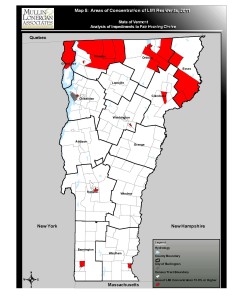We’ve mentioned in several posts that low-income families benefit in various ways when they’re able to live in mixed-income, “high opportunity” neighborhoods. (And we contend that these inclusive neighborhoods benefit, too, in various ways – economically, socially and culturally.)
Here are two publications that document the benefits to low-income children. “The Effects of Exposure to Better Neighborhoods on Children,” which came out in May, found that children in poor families move to better neighborhoods before the age of 13, they wind up with higher educational attainment and higher salaries as adults.
Another paper, “Children and Housing Vouchers,” argued that public policy should promote locating families with housing choice vouchers under the Section 8 program — families who live predominantly in lower-income areas, nationally — in better neighborhoods. (Baltimore’s Housing Mobility Program was cited as an example with documented benefits.) This paper noted that HUD’s Section 8 program, in which voucher-holders rent from private landlords, is in a better position to spread voucher-holders among low-poverty areas than HUD’s project-based public housing program.
All of this got us thinking about housing choice vouchers in Vermont. According to Vermont’s 2015 Housing Needs Assessment, there are about 6,310 housing choice vouchers in this state, and about 3,100 households on the waiting list. To these numbers, add these, from the 2012 Analysis of Impediments to Fair Housing Choice: 23 of Vermont’s 184 census tracts had concentrations of low-to-moderate income people, as shown on this map:
So, here are our questions of the day, awaiting further research:
- How many of these voucher holders live in the low-income zones, and how many live elsewhere? (Perhaps HUD’s new data analysis tools supplied under the AFFH rule will help answer this.)
- What are policy-makers or housing officials doing, if anything, to encourage Section 8 voucher holders to move to low-poverty, high-opportunity neighborhoods?
Granted, HUD’s subsidizable “fair market rents” may rule out units in some properties, particularly, one- or two-unit “non-conventional” housing that according to the Needs Assessment tends to be pricier in Vermont. Still, HUD’s Fair Market Rents for Chittenden County, according to the assessment, seem high enough to allow voucher holders a good deal of choice. They range from $1,003 for a one-bedroom apartment to $1,925 for 4 bedrooms.
